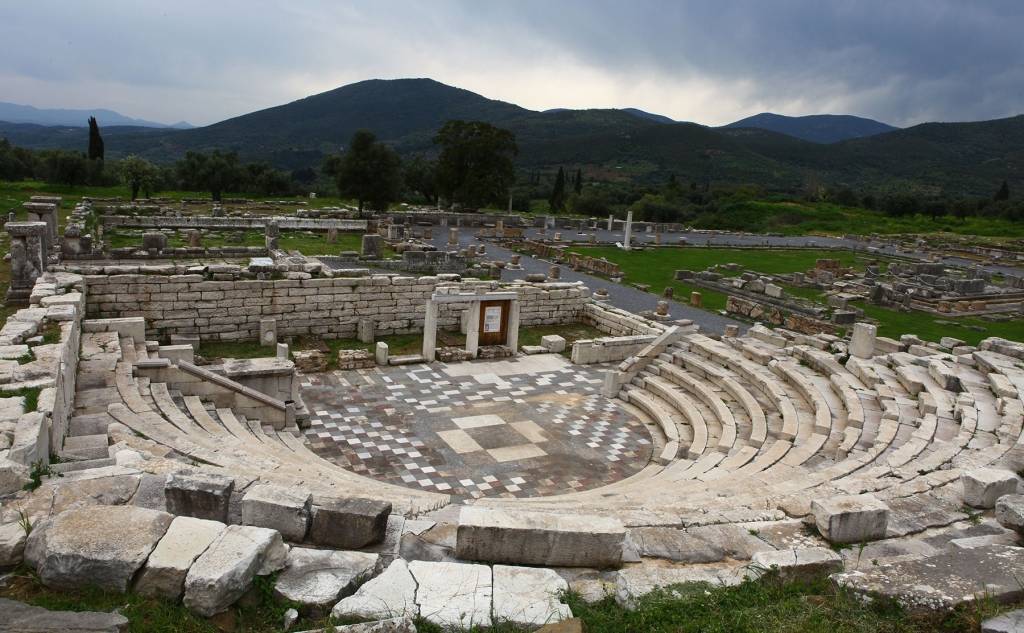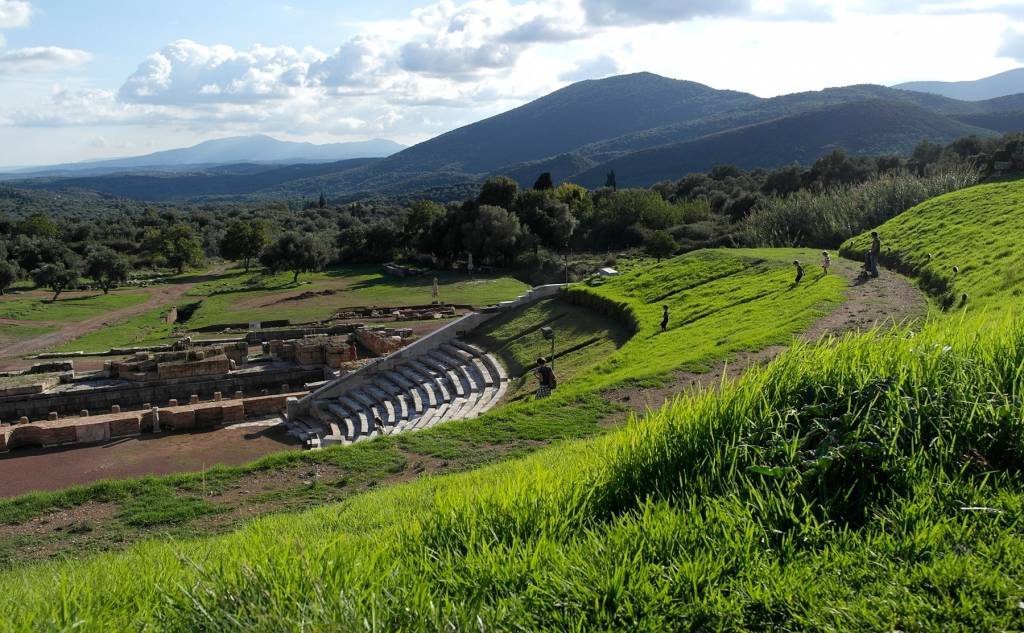Ancient Messina
The ancient city of Messina is located in the current village of Ancient Messina, which until 2002 was called Mavromati Ithomi. It is 30 kilometres from Kalamata.
The ancient city was founded in the winter of 370 BC. by Theban general Epaminondas after his victory over the Spartans at the battle of Lefktra and his invasion of Laconia. Epaminondas freed Messinia from the Spartan influence and chose the foothills of Mount Ithomi to build the capital of the free Messenians. Most of the information about the founding of the city is preserved by traveller Pausanias. The town was named after the mythical queen Messina, daughter of the king of Argos, Triops. The city remained a cultural centre (perhaps political) during the Roman years and at least until the end of the 4th century AD. In 365, the great earthquake of the Eastern Mediterranean probably had significant effects on Messina. At the same time, in 395, the invasion of the Goths and their King Alaric I dealt a decisive blow to the city. During the 5th century, Messina again became a significant settlement in the region. From the end of the 6th century until the beginning of the 8th century, the presence of Slavic populations is recorded alongside the Romans. Then the settlement was probably renamed Voulcano or Vourkano. Finally, the settlement continued as a large village with an essential archaeological presence during the Middle Byzantine period and the Late Middle Ages.
The wall surrounding Messina was extremely long (with a perimeter of 9 kilometres) and, at the time of traveller Pausanias, was already entirely made of stone. It had two monumental gates, the Arcadic (or Megalopolis gate) and the Laconic. At regular intervals, the wall was reinforced with two-storey, square and round stone towers. Today, it is best preserved on its northern side, on either side of the Arcadian gate.
Ancient Messina’s buildings have the same orientation and are part of the urban planning network created by horizontal and vertical streets. This urban planning system is known as hippodamius, after the original initiator, architect, town planner and astronomer of the 5th BC. century, Hippodamus from Miletus.
Ancient Messina was one of the first archaeological sites in Greece to be systematically excavated, even before the official establishment of the Greek State. The first scientific excavations began in 1829, by the French Moreas Scientific Expedition, under the direction of architect Guillaume-Abel Blouet. In 1895, the Hellenic Archaeological Society started the excavation of the main public buildings of the Agora with Themistocles Sofoulis. Excavations continued in 1909 and 1925 by archaeologist Georgios Oikonomos, while the excavation was carried out regularly every summer by academic Anastasios Orlandos. In 1986, the Hellenic Archaeological Society commissioned Professor Petros Themelis to direct the excavations of Ancient Messina. Since then, the excavations have continued with zeal, parallel fixing, and restoration works on the monuments. Ancient Messina is one of the important, in terms of size, form and preservation, cities of antiquity that not only have sacred and public buildings but also fortifications, residences and burial monuments.
SUMMER HOURS (1η Απριλίου - 30 Οκτωβρίου)
|
Daily |
08:00 – 20:00 |
WINTER HOURS (31 Οκτωβρίου - 31 Μαρτίου)
|
Daily |
09:00 – 16:00 |









